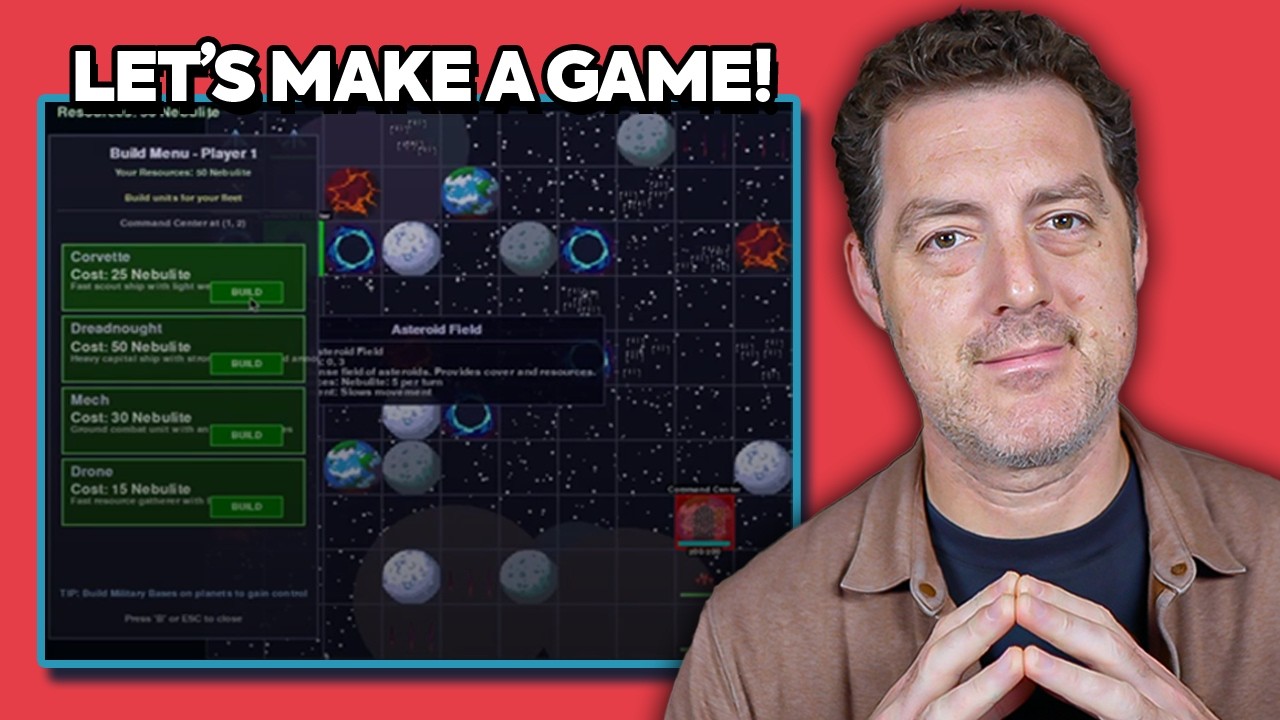In the video, the creator builds a 2D grid-based sci-fi strategy game called “Nebula Dominion” using Vibe coding and AI tools like Grok and Cursor with Claude 3.7, which help streamline the development process. They successfully implement various game mechanics, including resource management, ship types, and a combat system, while emphasizing the importance of clear coding practices and project management throughout the four-hour development journey.
In the video, the creator shares their experience of building a full strategy game using Vibe coding, a method that allows for game development without writing traditional code. They started by defining the concept of a 2D grid-based, turn-based sci-fi strategy game, which was named “Nebula Dominion.” The initial guidance was provided by an AI tool called Grok, which helped outline the game’s rules and mechanics. Within a few hours, the creator had a working game framework, including resource management, various ships, a battle system, and AI opponents.
After establishing the basic concept, the creator utilized another AI tool, Cursor with Claude 3.7, to build the game’s framework. This involved setting up the main game file, incorporating necessary dependencies like Pygame and NumPy, and creating folders for images and sounds. Although they encountered some initial issues with missing modules, the AI quickly resolved these problems. The creator then focused on developing the game state and adding functionality to the grid, which initially appeared as a blank 10x10 grid.
To enhance gameplay, the creator introduced four different ship types, each with unique roles, and began refining the user interface. They added tooltips to provide information about each unit’s status and improved the movement mechanics to make the game feel more intuitive. The AI was also programmed to make moves in a way that allowed the creator to understand its actions better. However, the combat system was initially simplistic, prompting the creator to implement a more engaging battle mechanic where adjacent units could attack each other.
As the game progressed, the creator focused on adding features like warp lanes and bases, which became crucial for gameplay strategy. They emphasized the importance of clear terminology in the game’s code to avoid confusion and bugs. The creator also developed a build menu for constructing new units, introducing a waiting period for unit availability to enhance the game’s economy. Visuals were improved by incorporating sprites, which made the game more visually appealing and engaging.
Throughout the development process, the creator learned valuable lessons about coding and project management. They emphasized the importance of committing code frequently using Git, writing tests for new features, and maintaining a structured workflow. The entire project took about four hours, with much of the time spent waiting for the AI to process commands. The creator expressed their enjoyment of Vibe coding and the ease it brought to game development, inviting viewers to engage with the video and share their interest in future content.
